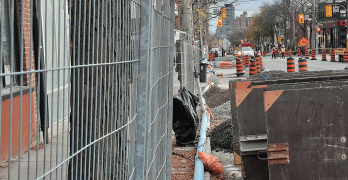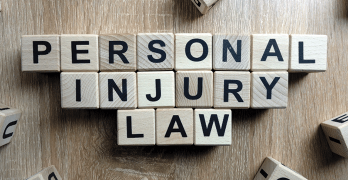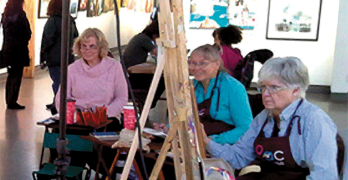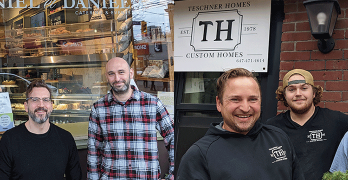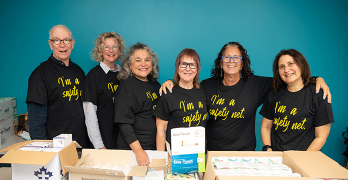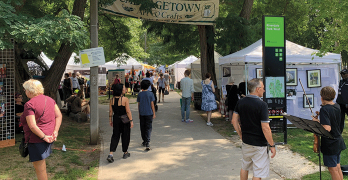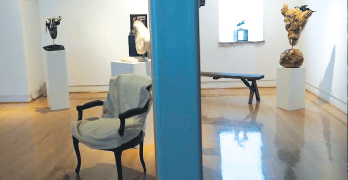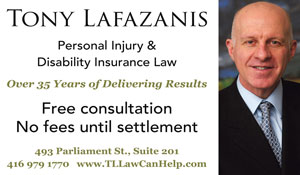LOCAL BUSINESS OWNER HELPS REFORM TORONTO SHELTER STANDARDS AND ONTARIO’S
OCCUPATIONAL HEALTH AND SAFETY ACT!
Nick Rondinelli – Owner and CEO, Heart to Heart First Aid CPR Services Inc. nick@heart2heartcpr.com www.heart2heartcpr.com
It’s been a while since I have provided the Cabbagetown community with updates on our advocacy work and I am very pleased to share some groundbreaking outcomes that have influenced policy change within the City of Toronto and the province of Ontario.
For those who are not familiar, we began our advocacy work on the overdose crisis on October 15, 2020, when we first learned that Toronto shelters were experiencing a record high number of deaths from opioid poisoning. We discovered that many shelter operators and workers (who are required to be trained and certified in First Aid and CPR) were following a similar protocol as outlined in a Toronto Public Health (TPH) “5-Step Overdose Response” graphic. This graphic recommends: “Do Chest Compressions ONLY during COVID-19, NO Rescue Breathing.” A version of the same “5-Step Overdose Response” is also on the City of Toronto’s website.
As a Red Cross First Aid Instructor Trainer and the owner of Heart to Heart CPR, I strongly felt that this “directive” to perform “compression-only CPR” was not appropriate for trained responders, who, with the right equipment and PPE, should be able to provide critical ventilations when managing an opioid overdose. It also may discourage a competent lay person to provide critical oxygen to a loved one. The ambiguity arising from the 5-step graphic has created confusion among trained responders.
We also identified other major gaps and breakdowns within the Toronto Shelter Standards regarding workers being under-equipped and under-prepared to protect themselves and others during COVID-19. We also pointed out the lack of 4-piece PPE and PPE training among staff, including the use of a Bag-Valve Mask and two-rescuer CPR.
As a concerned citizen and a health and safety professional for 23 years in Cabbagetown, I contacted senior city officials as well as the executive directors of two large city-run shelters about the risk of more shelter deaths amidst the pandemic.
Our multiple attempts at communicating with City officials and shelter executives were unanswered and there was no resolution to our inquiries or concerns. We understood early in our advocacy the urgency for specialized training not only for shelter workers but for any person who is most at risk of witnessing, encountering, and experiencing opioid poisoning. We wanted to provide our free services and specialized training in a meaningful way and in honour of all those who have lost their lives, including my late dear friends Garth Johnston and Natalie Brais.
As a member of the 2SLGBTQ+ community, I have seen first-hand how vulnerable communities are disproportionately impacted. We decided to focus directly on the populations most at risk. Our goal was to target people who use drugs (PWUD) and their friends, family, and peers who are close by and can intervene quickly to prevent accidental death.
We created a training program called Overdose Prevention & Resuscitation (CPR-OPR), a new classification of CPR training specifically for lay overdose responders who are most likely to perform overdose response. This training is unique as it covers critical opioid poisoning skills that are not covered in basic first aid/CPR courses. It uses a combination of current guidelines and protocols from “lay rescuer CPR” and more advanced skills from Basic Life Support (BLS).
Between June 2021 to February 2022, we have trained and equipped over 220 high risk responders to provide overdose response. We completed Phase 1 in downtown Toronto, Phase 2 in Thunder Bay, Phase 3 was repeated in Toronto and Phase 4 in Brantford, ON.
We collected extensive data during Phase 1 from 75 responders and completed an in-depth Impact Evaluation Report. This report allowed us to advocate to governments showing our evidence that supported our recommendations for policy change
We are happy to report that our training and responders are saving lives on the frontlines of the opioid crisis. A follow-up survey was conducted three months post-training for the first cohort of responders (Phase 1). Fourteen (14) out of the thirty-one (31) responders indicated they had utilized the skills learned in-class to provide real overdose response. That is 46% in just three (3) months following the training! All responders indicated that the person experiencing opioid poisoning survived.
Shortly after the launch of our program, the American Heart Association’s (AHA) journal “Circulation” released a medical statement called “Opioid-Associated Out-of-Hospital Cardiac Arrest” which provides recommendations that coincide with those taken in our CPR-OPR program. This medical statement confirms that the additional first aid skills offered in our training meets the current medical standards for opioid response and are appropriate for shelter workers. When we came to learn about this medical statement, we were overjoyed and felt vindicated.
This extraordinary alignment between our work and advocacy in overdose response, and the later published AHA medical statement solidifies that “evidence” must be rooted not only in science but also from lived experiences of people who use drugs (PWUD), along with the professional observations of frontline workers and service providers…like myself. My concerns were ignored and no one took me seriously. This is why we fought so hard to continue our work and produce evidence that supported our claims, which is exactly what we did.
HOW WE AFFECTED POLICY CHANGE
City of Toronto
In September 2021, Toronto Public Health along with the Associate Medical Officer of Health, met with SSHA directors and agreed to bring forward overdose response training for the shelter environment beyond the lay rescuer approach. They want to adopt key components of our specialized program for their workers to be trained. They are using our Impact Evaluation Report as a key resource for their new training requirements.
On January 17, 2022 we learned that all Toronto shelter and respite providers were given a new directive by the General Manager of Shelter Support Housing Administration (SSHA) that finally allowed for the provision of providing oxygen in overdose response with the proper PPE and Infection Prevention and Control (IPAC) requirements. We are pleased to see progress as it has taken 15 months from our original request and ongoing advocacy to get clarity on this issue and a means to provide critical oxygen for those suffering from opioid poisoning, a breathing emergency that causes cardiac arrest as a result of a lack of oxygen.
Province of Ontario
On May 19th, 2021, Nick provided a report to the Ontario Ministry of Labour, Training and Skills Development (MLTSD) and identified gaps within workplace training and the Occupational Health and Safety Act (OHSA) which did not provide proper protections for workers who are most likely to witness opioid poisoning. In January 2022, the MLTSD proposed changes to OSHA that would mandate all high risk workplaces in Ontario of opioid overdoses to carry naloxone and to train workers in overdose response. This announcement came when the latest statistics indicated that 30% of people who died from opioid-related causes between March 2020 to January 2021 were from the construction industry. By this time, MLTSD was observing our training on social media and openly supported our training and leadership.
On January 15th, 2022 Nick took part in the public consultation and MLTSD engaged Nick to provide expert advice regarding the implementation and impact evaluation on naloxone distribution and overdose response training to workers within workplaces in Ontario.
On April 11, 2022 the Ontario Government passed the Working for Workers Act, 2022 (Act 2), which mandates naloxone in all high risk workplaces and includes very strict requirements for employers to abide by. For the first time in history, the Occupational Health and Safety Act (OHSA) in Ontario now includes harm reduction to protect workers from overdose and workers who provide overdose response. OHSA will not limit or prohibit workers to use naloxone on clients, customers or anyone else in an emergency! This is now the law in Ontario.
These major developments were at the root of our advocacy when we started back in October 2020 and within 15 months we are pleased to see them come to fruition. We are grateful that our extensive work, data and recommendations, along with the medical statement from the AHA, has urged beauracrates and policy makers to reform policies and encourage those who employ at-risk workers to provide them with the proper training and support they need and deserve.
As we continue our efforts to counter the overdose crisis, we embrace the principle of “Nothing About Us, Without Us”. We would like to acknowledge and thank all the people with lived experience and the frontline shelter, outreach, and harm reduction workers, who assisted in the co-creation of CPR-OPR training.



